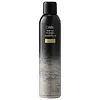What's inside
What's inside
 Key Ingredients
Key Ingredients

 Benefits
Benefits

 Concerns
Concerns

 Ingredients Side-by-side
Ingredients Side-by-side

Isobutane
Propane
Sd Alcohol 40-B
AstringentAluminum Starch Octenylsuccinate
AbsorbentParfum
MaskingWater
Skin ConditioningCyclopentasiloxane
EmollientIsopropyl Myristate
EmollientCrambe Abyssinica Seed Oil
Skin ConditioningNiacinamide
SmoothingStearalkonium Hectorite
Gel FormingCaffeine
Skin ConditioningCitrullus Lanatus Seed Oil
EmollientPropylene Carbonate
SolventGlycerin
HumectantBambusa Arundinacea Juice
AbrasiveOryza Sativa Hull Powder
AbrasiveEthylhexyl Salicylate
UV AbsorberCaprylic/Capric Triglyceride
MaskingChamomilla Recutita Flower Extract
MaskingCommiphora Myrrha Resin Extract
Skin ConditioningLavandula Angustifolia Flower Extract
CleansingBiotin
AntiseborrhoeicPhenoxyethanol
PreservativeLitchi Chinensis Fruit Extract
Skin ConditioningLeontopodium Alpinum Flower/Leaf Extract
Skin ConditioningApium Graveolens Seed Extract
AntioxidantVegetable Amino Acids
Skin ConditioningLeuconostoc/Radish Root Ferment Filtrate
AntimicrobialCitric Acid
BufferingPotassium Sorbate
PreservativeSodium Benzoate
MaskingHexyl Cinnamal
PerfumingLimonene
PerfumingLinalool
PerfumingCitral
PerfumingIsobutane, Propane, Sd Alcohol 40-B, Aluminum Starch Octenylsuccinate, Parfum, Water, Cyclopentasiloxane, Isopropyl Myristate, Crambe Abyssinica Seed Oil, Niacinamide, Stearalkonium Hectorite, Caffeine, Citrullus Lanatus Seed Oil, Propylene Carbonate, Glycerin, Bambusa Arundinacea Juice, Oryza Sativa Hull Powder, Ethylhexyl Salicylate, Caprylic/Capric Triglyceride, Chamomilla Recutita Flower Extract, Commiphora Myrrha Resin Extract, Lavandula Angustifolia Flower Extract, Biotin, Phenoxyethanol, Litchi Chinensis Fruit Extract, Leontopodium Alpinum Flower/Leaf Extract, Apium Graveolens Seed Extract, Vegetable Amino Acids, Leuconostoc/Radish Root Ferment Filtrate, Citric Acid, Potassium Sorbate, Sodium Benzoate, Hexyl Cinnamal, Limonene, Linalool, Citral
Ingredients Explained
These ingredients are found in both products.
Ingredients higher up in an ingredient list are typically present in a larger amount.
Aluminum Starch Octenylsuccinate is a synthetic powder used as an absorbent, thickener, and anti-caking agent.
As an absorbent, it is great at mattifying skin by soaking up the oil. This is why you'll find it in a range of products from makeup to moisturizers.
This ingredient is considered a modified starch. Starch can also be found naturally in plants.
One study from 1991 found that 5% of this ingredient enhanced titanium dioxide SPF by as much as 40%. The study found 1% titanium dioxide had a 5.6 SPF and adding 5% of aluminum starch octenylsuccinate boosted it to an SPF of 8.1
Although “aluminum” in an ingredient name can raise red flags for some consumers, the form and usage context matter significantly. For typical topical applications, there is no substantial evidence of health risks - such as cancer, neurotoxicity, or systemic “aluminum overload.”
Learn more about Aluminum Starch OctenylsuccinateWe don't have a description for Isobutane yet.
Isopropyl Myristate is an emollient, thickening agent, and texture enhancer. It is created from isopropyl alcohol and myristic acid.
It is used to help other ingredients be better absorbed. It is also an emollient and may help soften and hydrate the skin.
The comedogenic rating of this ingredient depends on the concentration. Lower amounts results in a lower rating.
Isopropyl Myristate may not be fungal acne safe. It can potentially worsen acne prone skin.
Learn more about Isopropyl MyristateParfum is a catch-all term for an ingredient or more that is used to give a scent to products.
Also called "fragrance", this ingredient can be a blend of hundreds of chemicals or plant oils. This means every product with "fragrance" or "parfum" in the ingredients list is a different mixture.
For instance, Habanolide is a proprietary trade name for a specific aroma chemical. When used as a fragrance ingredient in cosmetics, most aroma chemicals fall under the broad labeling category of “FRAGRANCE” or “PARFUM” according to EU and US regulations.
The term 'parfum' or 'fragrance' is not regulated in many countries. In many cases, it is up to the brand to define this term.
For instance, many brands choose to label themselves as "fragrance-free" because they are not using synthetic fragrances. However, their products may still contain ingredients such as essential oils that are considered a fragrance by INCI standards.
One example is Calendula flower extract. Calendula is an essential oil that still imparts a scent or 'fragrance'.
Depending on the blend, the ingredients in the mixture can cause allergies and sensitivities on the skin. Some ingredients that are known EU allergens include linalool and citronellol.
Parfum can also be used to mask or cover an unpleasant scent.
The bottom line is: not all fragrances/parfum/ingredients are created equally. If you are worried about fragrances, we recommend taking a closer look at an ingredient. And of course, we always recommend speaking with a professional.
Learn more about ParfumPropane is a gas derived from petroleum and natural gas. It is used as a propellant.
This ingredient is most commonly used in shaving cream, hair products, and makeup.
SD Alcohol 40-B is created by denaturing ethanol with tert-Butyl alcohol and denatonium benzoate. It is a solvent and astringent.
The 'SD' stands for 'specially denatured'. Denatured alcohol means the structure has been altered.
The 40-B is given by the U.S. Bureau of Alcohol, Tobacco, and Firearms. This is in accordance to the method of how the alcohol was denatured.
This ingredient is a solvent alcohol.
Learn more about Sd Alcohol 40-B